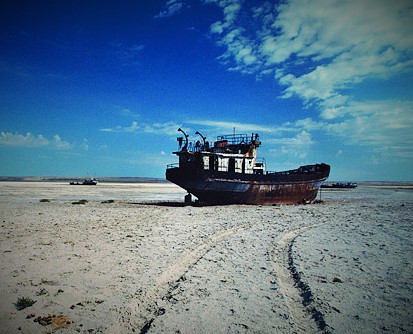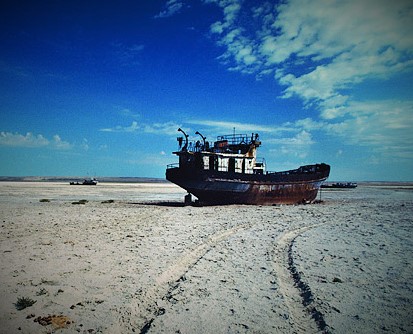
World economy is moving towards the water crisis as exposure to drastic climate changes are increasingly the danger for the planet. According to World Health Organization estimates, there are almost 768 million people across the world who do not have access to safe and clear drinking water. With a continuous expansion of economies and population, water is required in order to sustain this growth. If the usage of water continues at the current pace, the world will witness 40% of water crisis situation by 2030 (according to United Nations World Water Assessment Program).
Increasing living standards of expanding middle class coupled with surging income have steered steep rise in water uses which is likely to be unsustainable in the near future. Moreover, the rising population and urbanization in different parts of the world has also contributed to the trouble. As stated in a report, the worldwide population is anticipated to increase to 9.1 billion people by 2050 significantly above the current level of 7.2 billion.
Water is very essential for sustainable development. The global demand for water is fuelled by increasing requirements from manufacturing activities, trade globalization, energy security policies, changing diets as well as increase in domestic consumption. Therefore, the demand for water across the globe is expected to grow 55% by 2050 (as stated in report). Almost more than 50% of people live in cities out of which almost half are living in slums of the city. Hence the urban inhabitants are expected to upsurge to a total of nearly 6.3 billion till 2050. The expanding urban and rural population will thereby push the demand for more energy as well as water. One of the most effective measures that can be implemented to save water is raising renewable energy subsidies and restricting thermal power stations as generation of thermal power consumes huge amount of water. In order to save the world from water deficit, there is an increasing need for striking a balance between expanding demand and limited supply of water.
With nearly 20% of the water bodies being over-exploited, the groundwater supplies are continuously declining. Unabated urbanization, improper agricultural facilities, pollution and deforestation are major factors causing disruption to the entire ecosystem. The persistent shift towards renewable sources of energy will act as a key determinant for attaining sustainable water future.
The world economies specifically the developing countries are likely to witness a rampant increase in water demand to almost 4 times from 2000 to 2050 in order to meet the expanding requirements from manufacturing industry. However, many big corporations have started evaluating the need for water and thereby taking necessary steps to curb water usage.
The challenges encountered in sustainable development varies from region to region. The European and North American region is facing difficulty in decreasing pollution and wastes, influencing water consumption and in selecting suitable technologies.
While in the Asia and Pacific region, water sustainability is closely linked with improving accessibility to safe water and sanitation. And in Africa, only 5% of its potential resources for water are developed with just 5% of the ploughed land being watered and even less than 10% of its hyropower potentials being utilized for power generation.
Increasing living standards of expanding middle class coupled with surging income have steered steep rise in water uses which is likely to be unsustainable in the near future. Moreover, the rising population and urbanization in different parts of the world has also contributed to the trouble. As stated in a report, the worldwide population is anticipated to increase to 9.1 billion people by 2050 significantly above the current level of 7.2 billion.
Water is very essential for sustainable development. The global demand for water is fuelled by increasing requirements from manufacturing activities, trade globalization, energy security policies, changing diets as well as increase in domestic consumption. Therefore, the demand for water across the globe is expected to grow 55% by 2050 (as stated in report). Almost more than 50% of people live in cities out of which almost half are living in slums of the city. Hence the urban inhabitants are expected to upsurge to a total of nearly 6.3 billion till 2050. The expanding urban and rural population will thereby push the demand for more energy as well as water. One of the most effective measures that can be implemented to save water is raising renewable energy subsidies and restricting thermal power stations as generation of thermal power consumes huge amount of water. In order to save the world from water deficit, there is an increasing need for striking a balance between expanding demand and limited supply of water.
With nearly 20% of the water bodies being over-exploited, the groundwater supplies are continuously declining. Unabated urbanization, improper agricultural facilities, pollution and deforestation are major factors causing disruption to the entire ecosystem. The persistent shift towards renewable sources of energy will act as a key determinant for attaining sustainable water future.
The world economies specifically the developing countries are likely to witness a rampant increase in water demand to almost 4 times from 2000 to 2050 in order to meet the expanding requirements from manufacturing industry. However, many big corporations have started evaluating the need for water and thereby taking necessary steps to curb water usage.
The challenges encountered in sustainable development varies from region to region. The European and North American region is facing difficulty in decreasing pollution and wastes, influencing water consumption and in selecting suitable technologies.
While in the Asia and Pacific region, water sustainability is closely linked with improving accessibility to safe water and sanitation. And in Africa, only 5% of its potential resources for water are developed with just 5% of the ploughed land being watered and even less than 10% of its hyropower potentials being utilized for power generation.





